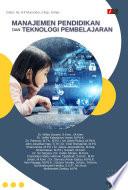Menjadi ancaman dalam masyarakat jika pendidikan diselenggarakan tanpa didikan karakter cerdas (moral). Belum tentu, dan tidak semua orang yang berpendidikan itu, telah terdidik dengan nilai-nilai karakter. Buku ini merupakan hasil penelitian, mengkaji masalah pendidikan karakter cerdas yang mengemuka saat ini. Ia terdiri dari nilai-nilai karakter cerdas dalam kehidupan utuh, efektif, dan yang terkandung dalam butir-butir Pancasila, terdiri dari tiga bagian. Bagian I terdiri dari tiga bab, yakni: Bab 1 Landasan Dasar, mempresentasikan landasan pendidikan karakter cerdas sebagai fondasi utama pendidikan, memuat landasan: filosofi, historis, sosiologi, psikologi, dan teori belajar pembelajaran karakter cerdas. Bab 2 Model Pembelajaran Karakter Cerdas, menguraikan: pengertian pembelajaran afektif, komponen domain/ ranah afektif dan hirargikalnya, kedudukan skemata afeksi dalam pembelajaran, hubungan integrasi antara ranah afektif dengan kognitif dan psikomotor, aplikasi kurikulum pengembangan afektif, prinsip pembelajaran afektif, dan pengembangan instrumen penilaian afektif. Bab 3 Konsep Dasar Pendidikan Karakter Cerdas, mempresentasikan: hakikat pendidikan karakter cerdas, pengertian karakter, konsep dasar kecerdasan, tujuan pendidikan karakter cerdas, dan pokok-pokok nilai-nilai karakter cerdas. Bagian II terdiri dari Bab 4, Nilai-Nilai Karakter Cerdas dalam kehidupan yang Utuh dan Efektif, mempresentasikan sumber nilai-nilai karekter cerdas, yakni Beriman dan Bertakwa kepada Tuhan Yang Maha Esa. Bab 5, Jujur, mengurai konsep dasar karakter cerdas jujur. Bab 6, Cerdas, menguraikan: pengertian cerdas. Bab 7, Tangguh, menguraikan pengertian tangguh, yakni: 22) cermat, teliti, dan hati-hati, 23) sabar/ mengendalikan diri, 24) disiplin, 25) ulet/ tidak putus asa, 26) bekerja keras, 27) terampil, 28) produktif, 29) berorientasi nilai tambah, 30) berani berkorban, 31) tahan uji, 32) berani menanggung resiko, dan 33) menjaga K3. Bab 8, Peduli, menguraikan pengertian peduli, yakni: 34) mematuhi peraturan/ hukum yang berlaku, 35) sopan santun, 36) loyal dengan mentaati perintah, 37) demokratis, 38) sikap kekeluargaan, 39) gotong royong, 40) toleransi/ suka menolong, 41) musyawarah, 42) tertib/ menjaga ketertiban, 43) damai/ anti kekerasan, 44) pemaaf, dan 45) menjaga kerahasiaan. Bagian III terdiri dari enam bab (Bab 9-14), mengurai Nilai-nilai karakter cerdas (45 butir) yang terkandung dalam butir-butir Pancasila sebagai dasar dan ideologi negara Indonesia, dan sumber jati diri. Selamat membaca!
-
ISBN 13 : 6233515203
-
ISBN 10 : 9786233515207
-
Judul : Model Pembelajaran Pendidikan Karakter Cerdas
-
Pengarang :
Dr. Famahato Lase,
M.Pd.,
Kons.,
Prof. Dr. Herman Nirwana,
M.Pd.,
Kons.,
Prof. Dr. Neviyarni S,
M.S.,
Kons.,
Dr. Marjohan,
M.Pd.,
Kons.,
M.Pd.,
Kons.,
Prof. Dr. Herman Nirwana,
M.Pd.,
Kons.,
Prof. Dr. Neviyarni S,
M.S.,
Kons.,
Dr. Marjohan,
M.Pd.,
Kons.,
-
Kategori : Education
-
Penerbit : Nas Media Pustaka
-
Bahasa : id
-
Tahun : 2022
-
Halaman : 305
-
Google Book : https://play.google.com/store/books/details?id=P8CAEAAAQBAJ&source=gbs_api
-
Ketersediaan :
ga komponen bekerja sama melaksanakan dengan baik, maka akan terbentuk karakter cerdas bangsa yang kuat (Kesuma, 2011: 2). Dari pembahasan di atas dapat ditegaskan bahwa pendidikan karakter cerdas merupakan upaya memanusiakan manusia ...










